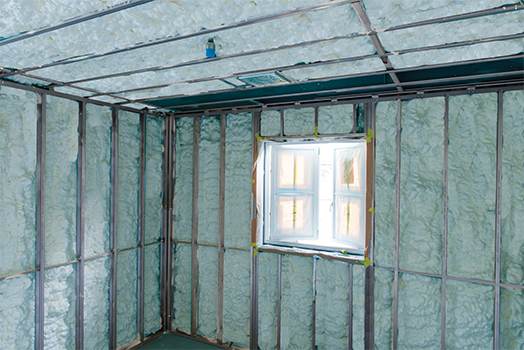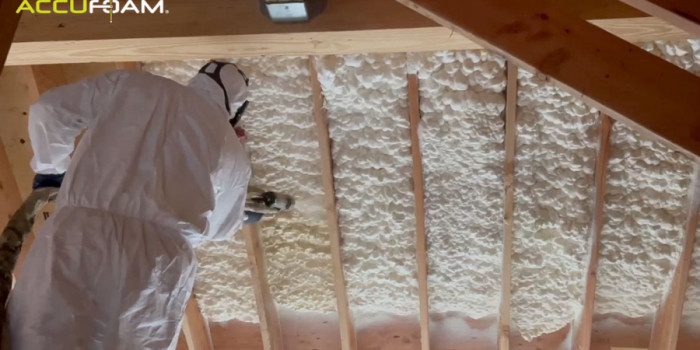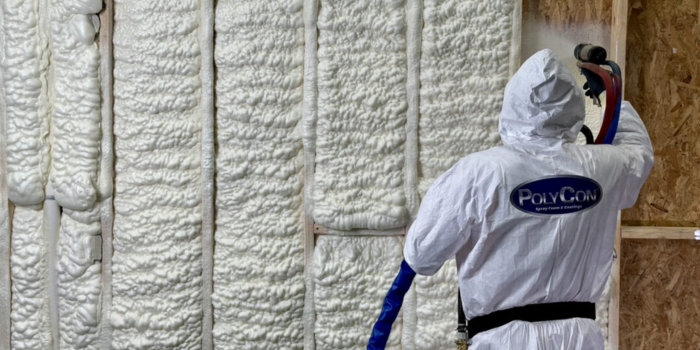A Look at SPF Demand and Supply


SPRAY FOAM MAGAZINE – The spray foam industry is facing challenges and opportunities in equal measure. Today, both material availability and shipping conditions are putting pressure on spray foam costs. Yet at the same time, structural demand for spray foam is growing in the U.S. Much of this demand is coming from the country’s homebuilders who, faced with their own set of variables, are focusing more on building higher performance homes with tighter building envelopes. Spray foam contractors should be aware of all these dynamics, positive and negative, as they plan for their own business success during the remainder of 2024 and into 2025.
Methylenediphenyl diisocyanate (MDI) is a key material in the industry’s current stress. Demand for this critical spray foam A-side material is increasing significantly, due in-part to growing needs within the construction industry. However, demand for MDI is expanding substantially across other (i.e., non-construction) industries as well. Unfortunately, this unrelated demand impacts MDI pricing within our own sector. Additionally, while MDI demand is surging, the supply is also tightening. For example, unforeseen events this year at MDI plants in North America only further reduced supply of this chemical, in turn impacting spray foam pricing.
MDI, however, is not the only component of spray foam under pressure today. Other SPF materials commonly sourced from Asia – including blowing agents, catalysts, and fire retardants - are all being subjected to higher shipping costs. Unfortunately, price increases across these materials are putting pricing pressure on both SPF manufacturers and contractors. As a manufacturer, we at Huntsman Building Solutions feel it is important to be transparent with our industry’s contractors about where price pressure is coming from. That way, contractors will be able to educate their own customers when they themselves are confronted with difficult pricing conversations.

As many contractors already appreciate, we also need to be mindful of what is happening at any given time with other insulations, such as with fiberglass, and any supply constraints impacting those materials. Supply issues among competing materials can directly influence the insulation market overall, and potentially increase demand for spray foam specifically. We have witnessed shifts occur in this area in 2024.
Material costs and supply aside, there has been ongoing nervousness throughout the year surrounding the large number of elections happening across the globe. In total, 49% of the world’s population is estimated to vote in elections happening in 64 countries plus the European Union this year. Elections bring change as well as uncertainty. Only time will tell how all of these will impact global trade as well as the supply chain the U.S. spray foam industry relies upon.
All this said, there are many positive things happening within our industry, creating reason for excitement. U.S. demand for SPF is growing, ultimately benefiting contractors installing the product. Homebuilders are at the center of much of this demand as they are increasingly focused on building higher performance homes and using spray foam to do so. Ultimately, builders are responding to tax incentives and building codes. For example, as part of the Inflation Reduction Act’s Section 45L, federal tax credits are available to builders of energy efficient homes. Thus, many are building to a much higher standard to take advantage of them. Builders are also looking to meet, or exceed, building code requirements, which are becoming more stringent. In both cases, spray foam provides an effective solution.

Builders are also paying close attention to the finance programs available to homebuyers. They want to make sure the homes they build meet the specific sustainability requirements mandated by those programs, to ensure borrowers have access to loans. For example, HUD and USDA loan programs recently increased energy efficiency parameters for new homes for those homes to qualify for their loans. Fannie Mae and Freddie Mac loan programs are also looking at initiating similar changes. Again, spray foam provides a great solution, allowing builders to not only deliver energy saving homes, but to ultimately make sure that homebuyers are eligible for the loans that will allow them to purchase those homes.
While some of what is being shared here is good news for contractors, other details, including those about supply and pricing pressures, are understandably harder to digest. That’s why it is so important that spray foam manufacturers are open with contractors about all current industry challenges. This transparency is key to helping contractors successfully navigate the landscape, make the right choices, better serve their own customers and sell the value of the insulation and air sealing product they proudly install.
Likewise, manufacturers must support the country’s builders with quality product, along with the resources and guidance that helps them address and respond to building code changes in their own construction. The ultimate goal with builders is to help them successfully optimize their new homes with spray foam for greater energy efficiency and savings.
Finally, there is a shared responsibility, recognized by spray foam manufacturers, to help protect the health of our industry on the legislative front. Throughout the year, any number of proposed bills and regulations are introduced at the state or federal level, many with the power to either enhance or hinder the ability of spray foam contractors and builders to succeed in their respective, related businesses. Promoting and encouraging the passing of positive SPF bills is thus equally as important as ensuring negative bills and regulations don’t pass and take effect.
Together with a united industry voice, we can make a greater impact. If you want to hear more about what is happening in the legislative front, you can subscribe to IBE’s newsletter; and if you want to get involved, join the SPFA’s advocacy network.
For use by SprayFoamMagazine.com & Spray Foam Magazine
Disqus website name not provided.










































